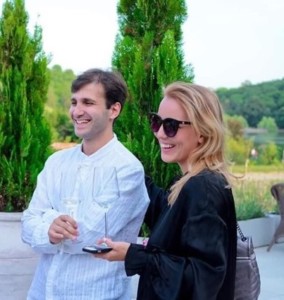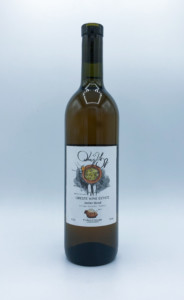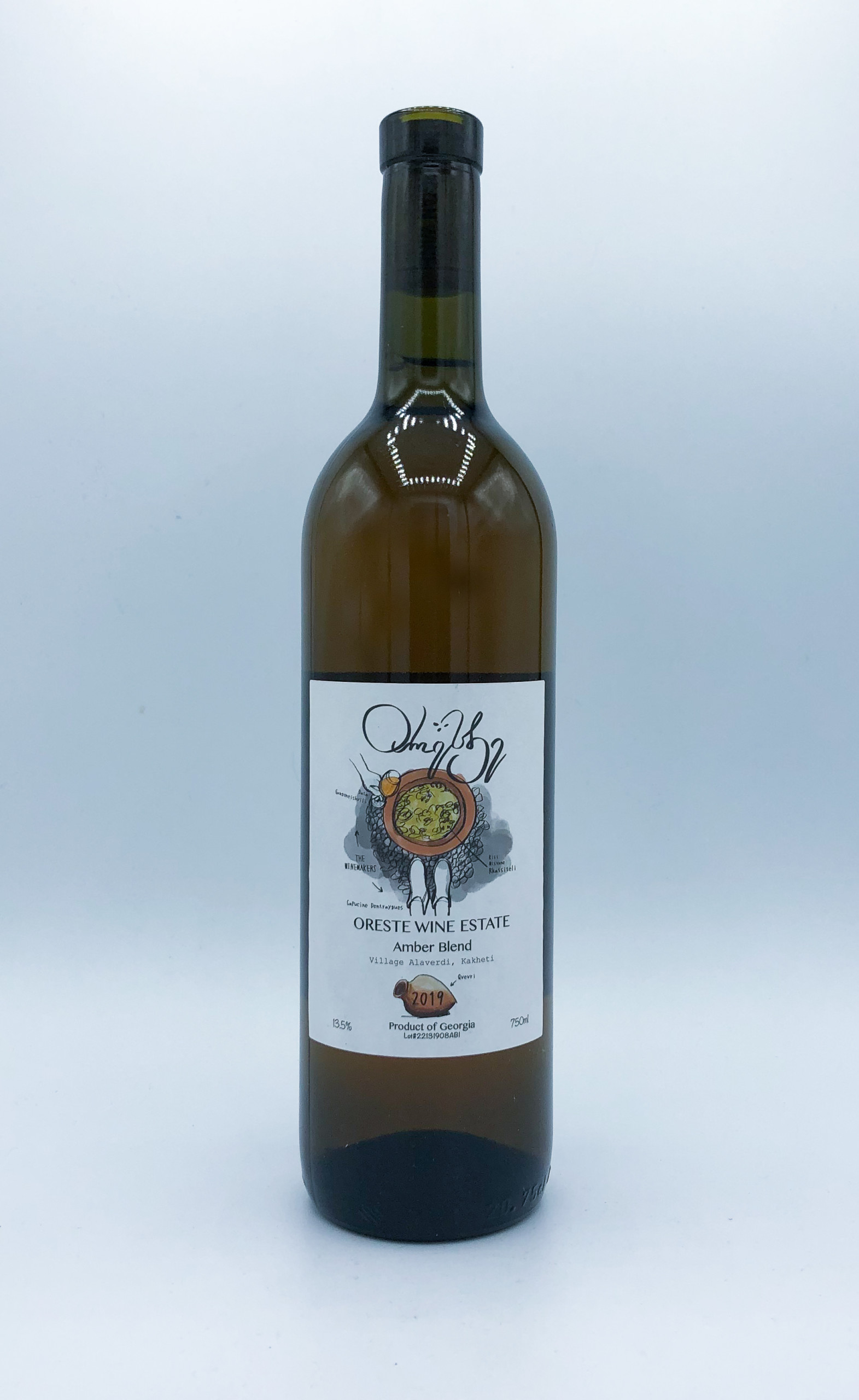Oreste
About
Owners & winemakers: Capucine Dentraygues & Davit Gamgoneishvili
Vineyards: 2ha of family-owned vineyards, with an additional 4.5ha to be planted
Vineyard management: Sustainable
Soils: Clay and limestone
Grapes grown: Rkatsiteli, Kisi, Mtsvane, Saperavi
Annual production: 8,000 bottles
Quick facts:
- Capucine and Davit are part of the new generation using ancestral techniques to honor Georgia’s historic and fascinating wine culture.
- The Alaverdi Monastery near the Oreste estate dates back to the 6th century–monks began making wine there sometime between the 8th and 10th centuries, and they still do so today.
- “Even the name ‘Georgia,’ given by Europeans, comes from the greek word ‘georgos,’ meaning farmer, and by extension, wine grower… Wine is part of people here, it is more than a culture.” – Davit Gamgoneishvili
- Cheers in Georgian is “gaumarjos” – გაუმარჯოს!
Capucine and Davit (nicknamed Data) are both from countries with historic winemaking traditions: Capucine from France, and Data from Georgia. Data has been surrounded by wine his whole life: he remembers his grandmother working at a Soviet-run wine factory when he was a child, and later working alongside his father, who founded an organic winery and taught him the country’s ancestral winemaking methods. For Capucine, growing up in Bordeaux meant that wine was also always all around–she initially took courses in wine marketing before discovering a passion for studying the different expressions of terroir.
They met while both pursuing masters degrees in oenology. After spending a few vintages working abroad, Data wanted to reconnect with his roots, and Capucine had also fallen in love with Georgia while doing her masters thesis there, so it was natural for them to take a leap of faith and establish a winery in Georgia together. They found an idyllic plot of land in front of the Alaverdi Monastery, and knew it was the perfect place for them to make wine. The estate sits between the foothills of the Caucasus mountains and the Tsiv-Gombori mountains, 450m above sea level. It’s ancient land considered sacred by the elders. According to Data, there’s a saying in Georgia that “there is freedom only in mountains,” and they feel it’s fitting for how they feel about this place.
Georgia has a fascinating history with wine. It’s home to 525 native grape varieties, most of which are found nowhere else in the world. The traditional qvevri winemaking method has been recognized by UNESCO as part of the “intangible cultural heritage of humanity.” Archaeological excavations have found evidence of winemaking in Georgia as far back as eight thousand years ago. However, for the second half of the twentieth century, Georgia was part of the USSR, and it became the “wine cellar” of the Soviet Union. As Data explains, “ecological interests were not important to Soviet leaders, who were focused on mass and very low quality wine production. Forests were cut down, rivers were diverted, new unresearched chemicals and farm machinery were used intensively… resulting in the impoverishment of natural ecosystems.” Restoring the lost equilibrium will take generations of work, and it’s what motivates Data and Capucine in their environmentally-friendly practices: they’re working the land organically, enriching the soil; they’ve reintroduced animals and cover crops; and they’ve established an agroforestry program, planting 1ha of walnut trees.
All of the winemaking is done in traditional qvevris, which Data and Capucine consider the “treasure” of Georgian wine: the clay allows a gentle micro-oxidation of the wine, like oak barrels but without imparting flavors; being buried underground ensures natural temperature control; and the egg shape creates a vortex during fermentation which gently stirs the wine and lees, for better fullness and texture. Fermentations occur spontaneously, and all grapes (white and red) undergo an extended period of skin contact, up to eight months. The long skin maceration helps protect the wines from degradation, while adding tannin and aromatic compounds. The goal is to find balance between old-world winemaking techniques and modern technology, while letting the wine express a sense of place and varietal character. “In order to create something beautiful,” Data says, “we always have to make some hard choices and tough decisions. But we are trying our best, we are young, and learning every day. We are trying to make a wine representative of our place, and take care of the nature surrounding us.”



